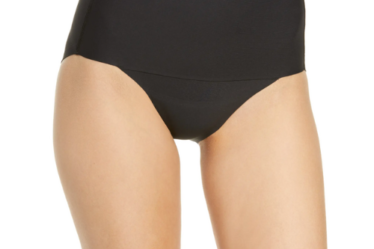
Swiss sneaker brand On wants to keep selling new shoes. It also wants to radically reduce its carbon emissions. But how is it possible for brands to produce more and more products, while lowering their environmental footprints?
This is the paradox at the core of fashion’s efforts to operate more sustainably.
For On, part of the solution is technology that sucks up industrial carbon emissions and recycles it into raw materials, making it possible to turn pollution into a shoe.
Science fiction, you say? It’s not, and On isn’t the only company working on it.
In June, Zara released a capsule of flamboyantly frilled dresses that contained a special kind of polyester made from recycled carbon emissions. Beauty giant Coty is aiming to make most of its perfumes using ethanol from captured carbon by next year. Companies like Pangaia and Lululemon are also experimenting in the space.
But efforts to develop materials from captured emissions are nascent, in many cases still in development in the lab. Products currently on the market typically contain only a small amount of recycled carbon and face significant financial and structural barriers to scale.
A landmark climate bill signed into law in the US this month could help change that, jumpstarting much more investment in carbon capture technologies.
The Inflation Reduction Act is a sweeping package of legislation that represents the most aggressive action on climate ever taken by the US government. It’s designed to pump hundreds of billions of dollars into technologies that will help the country meet global climate goals, among them carbon capture.
The new bill dramatically increases the tax credits available for companies focused on capturing industrial emissions from smokestacks to store underground or put to use, technology that’s been around for years but has struggled to scale because of its cost. Even more support is going towards companies focused on direct air capture, which sucks pollution from the atmosphere.
The technology isn’t without its critics, who worry it offers a carte blanche for companies and countries to keep burning polluting fossil fuels. But it’s also going to be needed to meet global targets to slash emissions, especially for heavy industries that can’t currently be decarbonised.
The subsidies are expected to ratchet up investment and substantially broaden the number of projects gaining support, in turn boosting projects underway to commercialise captured emissions as useful materials.
“Getting a carbon-negative material that’s at price parity or cheaper than conventional materials, this helps that happen faster,” said Neeka Mashouf, co-founder and CEO of captured-carbon textile start-up Rubi Laboratories, which has pilot agreements with several major fashion brands.
Elsewhere, On is working with carbon recycling company LanzaTech and chemical company Borealis to engineer a replacement for the foam used for cushioning in its sneakers. Long-term, the company has ambitions to replace the foam in all its shoes with this new material.
For more BoF sustainability coverage, sign up now for our new Weekly Sustainability Briefing by Sarah Kent.



